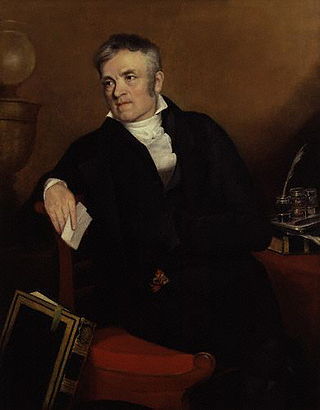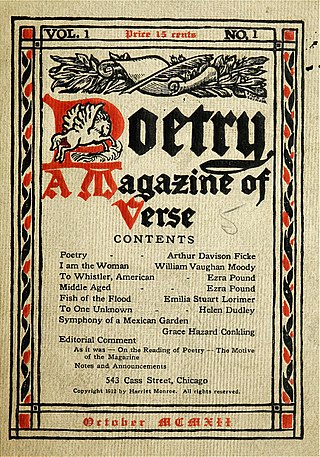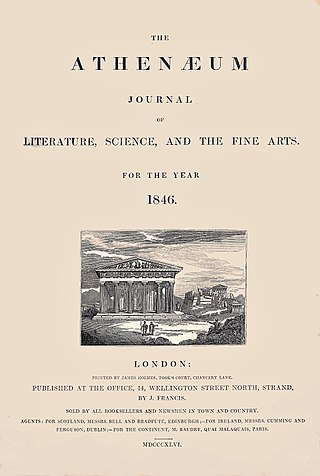Events from the year 1809 in literature.

A department store is a retail establishment offering a wide range of consumer goods in different areas of the store, each area ("department") specializing in a product category. In modern major cities, the department store made a dramatic appearance in the middle of the 19th century, and permanently reshaped shopping habits, and the definition of service and luxury. Similar developments were under way in London, in Paris and in New York (Stewart's).

Rudolph Ackermann was an Anglo-German bookseller, inventor, lithographer, publisher and businessman.

A literary magazine is a periodical devoted to literature in a broad sense. Literary magazines usually publish short stories, poetry, and essays, along with literary criticism, book reviews, biographical profiles of authors, interviews and letters. Literary magazines are often called literary journals, or little magazines, terms intended to contrast them with larger, commercial magazines.
Annual publications, more often simply called annuals, are periodical publications appearing regularly once per year. Although exact definitions may vary, types of annuals include: calendars and almanacs, directories, yearbooks, annual reports, proceedings and transactions and literary annuals. A weekly or monthly publication may produce an Annual featuring similar materials to the regular publication. Some encyclopedias have published annual supplements that essentially summarize the news of the past year, similar to some newspaper yearbooks.

The Athenæum was a British literary magazine published in London, England, from 1828 to 1921.
Henry Colburn was a British publisher.

Augustus Charles Pugin was an Anglo-French artist, architectural draughtsman, and writer on medieval architecture. He was born in Paris, then in the Kingdom of France, but his father was Swiss, and Pugin himself was to spend most of his life in England.
The Havell family of Reading, Berkshire, England, included a number of notable engravers, etchers and painters, as well as writers, publishers, educators, and musicians. In particular, members of this family were among the foremost practitioners of aquatint; and had a long association with Indian art and culture. The family first came to notice through the brothers Luke Havell and Robert Havell the Elder ; along with their nephew Daniel Havell.

George Murgatroyd Woodward (1765–1809) was an English caricaturist and humor writer. He was a friend and drinking companion of Thomas Rowlandson.
The New Monthly Magazine was a British monthly magazine published from 1814 to 1884. It was founded by Henry Colburn and published by him through to 1845.
Frederic Shoberl (1775–1853), also known as Frederick Schoberl, was an English journalist, editor, translator, writer and illustrator. Shoberl edited Forget-Me-Not, the first literary annual, issued at Christmas "for 1823" and translated The Hunchback of Notre Dame.

The Bower of Taste (1828–1830) was a periodical edited by Katherine Augusta Ware in Boston, Massachusetts, in the 19th century. Contributors included Albert Pike, Thomas Edwards and Margaret Snow." The bi-weekly magazine ceased in May 1830.

Forget-Me-Not was an illustrated British annual published by Rudolph Ackermann. It was the first literary annual in English and it was edited by Frederic Shoberl from its launch in 1822. A junior version appeared in 1828.
Sir Frederic Charles Lascelles Wraxall, 3rd Baronet, was a miscellaneous writer.

The Cambrian Quarterly Magazine and Celtic Repertory was an English-language quarterly magazine that published articles on Welsh and Celtic history and literature. Its aims were "to preserve 'native lore' for posterity and to win 'the incurious and indifferent into an interest for Wales'." It ran from 1829 to 1833.

David Hughson, which may have been a pen name of Edward Pugh, was a writer on the topography and history of London. He produced a description of the city based on "an actual perambulation" (walk) that was published in six volumes between 1805 and 1809 and contains 150 copper plate engravings principally based on illustrations by Robert Blemmell Schnebbelie and Edward Gyfford. He also produced works on topical matters such as the East India Company, religious subjects, and works of household management targeted at people of the "middling and genteel ranks of life".

Richard McDonald Caunter was an English clergyman and the presumed author of a play and poetry collection, Attila, a Tragedy; and Other Poems (1832). Following a brief career as an ensign in the army, Caunter took holy orders and was a parish priest of various parishes in southern England.











